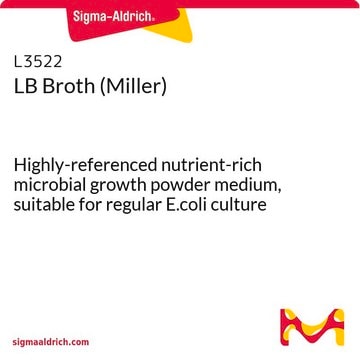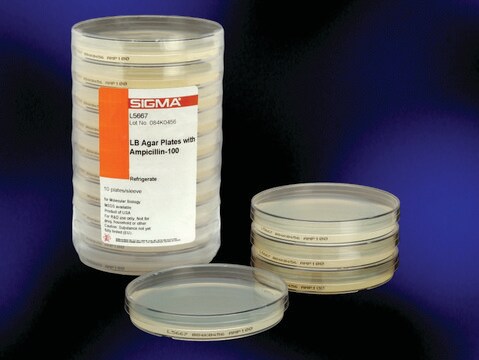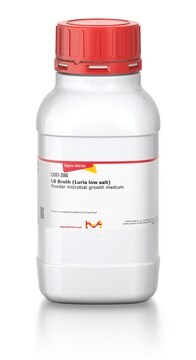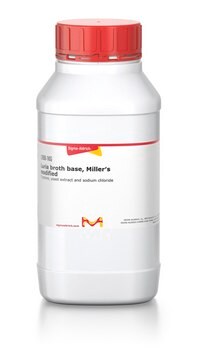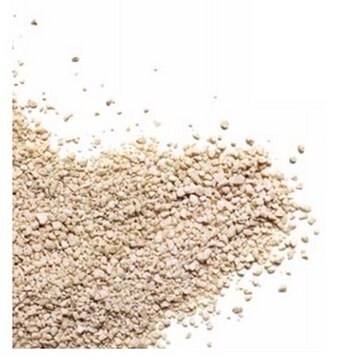L2542
LB Broth (Miller)
Liquid microbial growth medium
Synonym(s):
Luria Broth Miller, Luria-Bertani broth, Miller
About This Item
Recommended Products
grade
for molecular biology
sterility
sterile; 0.2 μm filtered
form
liquid
technique(s)
microbiological culture: suitable
pH
6.5-7.2
application(s)
microbiology
storage temp.
room temp
suitability
nonselective for Escherichia coli
nonselective for coliforms
General description
Application
- non-selective cultivation of E. coli strains for cloning, DNA plasmid production and production of recombinant proteins.
- selective cultivation when appropriate antibiotics are added.
- the cultivation of E-coli cells for anti-bacterial assays.
Features and Benefits
- Filter-sterilized, ready-to-use format
- Convenient package size
- Standard formulation
Components
10 g/L NaCl
5 g/L Yeast Extract
related product
Storage Class
12 - Non Combustible Liquids
wgk_germany
nwg
flash_point_f
Not applicable
flash_point_c
Not applicable
ppe
Eyeshields, Gloves, multi-purpose combination respirator cartridge (US)
Certificates of Analysis (COA)
Search for Certificates of Analysis (COA) by entering the products Lot/Batch Number. Lot and Batch Numbers can be found on a product’s label following the words ‘Lot’ or ‘Batch’.
Already Own This Product?
Find documentation for the products that you have recently purchased in the Document Library.
Customers Also Viewed
Articles
The development of genetic engineering and cloning has opened many possibilities of expression and isolation of heterologous proteins for research purposes. Considerable advances in technology have enabled expression and isolation of recombinant proteins in large scale.
Protocols
General protocols for growth of competent cells in microbial medium.
Our team of scientists has experience in all areas of research including Life Science, Material Science, Chemical Synthesis, Chromatography, Analytical and many others.
Contact Technical Service